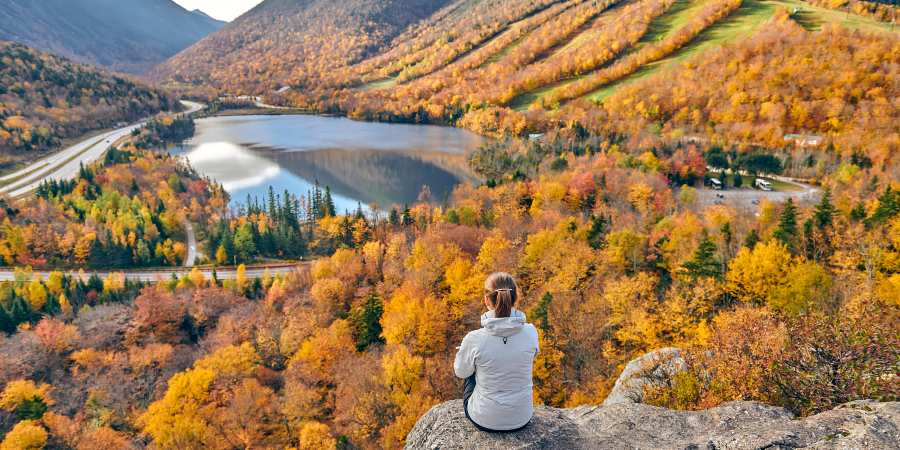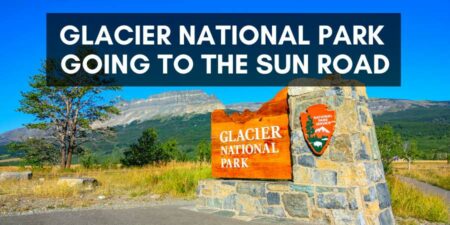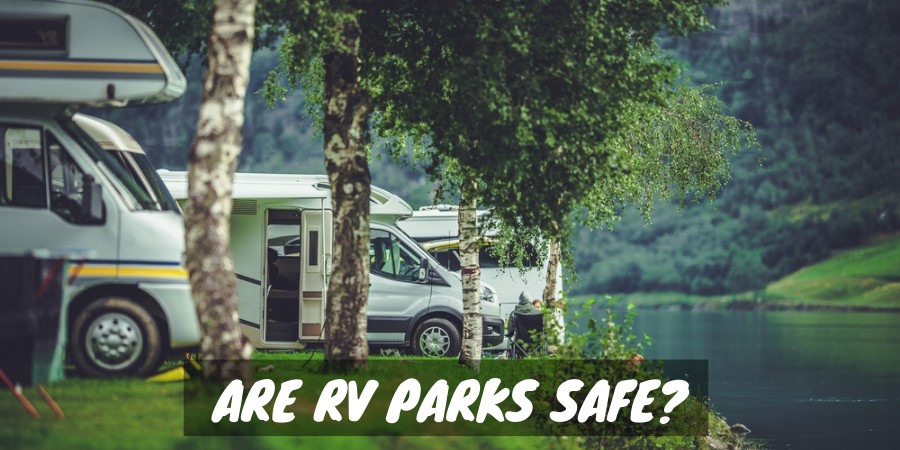It’s incredible how few people know about the US National Trails System, which comprises scenic, historic, and recreational trails that cover thousands of miles.
The US National Trails system aims to preserve and provide public access to historic or natural areas across America. The trails allow guests to tour an array of stunning natural landscapes and learn more about US history.
This guide will focus on the US National Scenic Trails that showcase the beauty of America across various regions and ecosystems.
So please keep reading to get details on all the Scenic National Trails, their locations, and what guests will see and learn along the way!
What You Need to Know About the US National Trails System
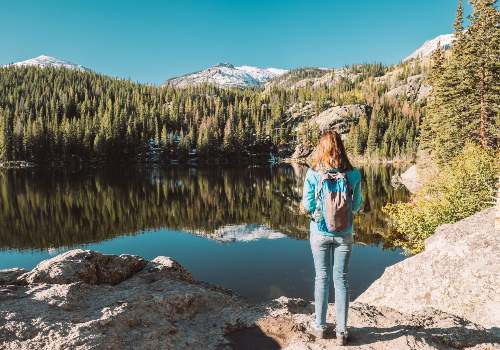
The National Trails System Act made the creation of easy-access trails that follow historical events or natural landscapes a priority to preserve such areas for future generations to appreciate, learn from, and enjoy.
While the scenic trails are wilderness-style hikes, many of the paths are open for bike or horseback riding, along with some you can boat.
The US National Trails System provides camping and RVing opportunities so that you can follow more extended portions of the route during a vacation or RV trip.
The National Trails are split into these groups:
- National Scenic Trails
- National Historic Trails
- National Recreation Trails
- Side and connecting trails
There are 30 scenic and historic trails, more than 1,300 recreation trails, and seven side and connecting trails totaling more than 88,700 miles.
With historic and scenic trails within every state, you’ll never be far from a stretch to explore.
Many solo, couple, and family outdoor enthusiasts find completing a scenic trail in small sections over several seasons or years very fulfilling. Other people enjoy the challenge of finishing an entire route during one stretch, whether that takes a few days or several months of daily hikes.
The recreational trails are too numerous to list separately in a single guide. The best way to locate trails in your state is to visit the National Park Service website. Most national recreation trails are a compilation of existing local, state, and federal park trails on both land and water.
There aren’t fees to hike any of the US National Trails, but you may need to pay to park your car at a state, National Park, or other location that has trailhead access.
Lastly, Scenic National Trails are for hiking the entire length on foot. However, there’s always the possibility that sections of the trail are not passable for some reason. Therefore, always check the current status of any path you plan to hike to ensure clear passage.
Hiking many longer scenic trails often puts you in remote locations, so always prepare a backpack with the supplies listed below to ensure you’re ready for any situation.
11 National Scenic Trails
National Scenic Trails focus on highlighting the best of our country’s natural landscapes, waterways, and landmarks and often provides the chance to enjoy additional recreational activities along its path.
The scenic trails are a minimum of 100 miles of continuous length for non-motorized use like hiking, biking, or horseback riding.
Here are the 11 National Scenic Trails:
Appalachian National Scenic Trail
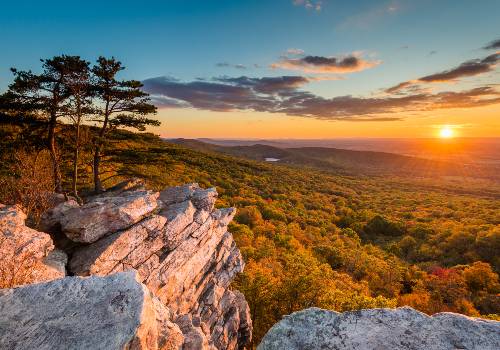
Length: 2,190 miles
States: ME, NH, VT, MA, CT, NY, NJ, PA, MD, WV, VA, TN, NC
The Appalachian Trail is a well-known and popular US scenic trail, with the southern terminus on Springer Mountain in Georgia and the northern end at Mount Katahdin in Maine inside Baxter State Park. Most of this hike is hilly and rocky, as it follows the Appalachian Mountain Range, but the ever-changing views of the natural landscape and wildlife are worth it.
Because the trail is so long, with many famous places to encounter along the way, over three million people hike a portion each year. In addition, about 3,000 people attempt the entire trail yearly, but only about 750 of those “thru-hikers” successfully finish from end to end in one trip.
Arizona National Scenic Trail
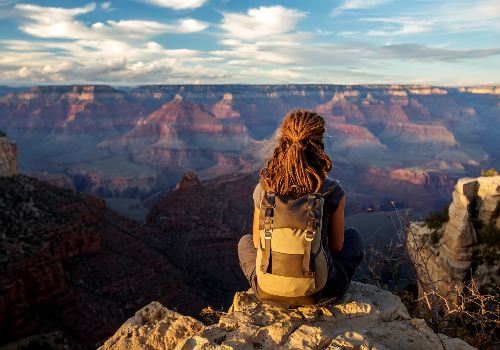
Length: 800 miles
State: AZ
The Arizona National Scenic Trail crosses the entire state, starting at the border monument 102 in Coronado National Memorial near Mexico and ending at the Utah border in the Kaibab Plateau.
As a completely non-motorized trail, you’ll enjoy a myriad of local wildlife and stunning vistas of deserts, canyons, and mountains, as well as various communities that each have their own significant cultural and historical ties to the state.
For a thru-hike, be aware that while parts of this trail are very flat and easy, other potions are rugged, and there’s a continual need for extra caution for stinging and venomous insects and snakes, as well as lack of water and weather extremes.
Continental Divide National Scenic Trail
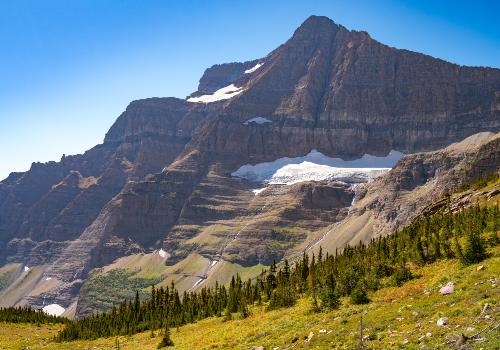
Length: 3,100 miles
States: MT, ID, WY, CO, NM
The Continental Divide Trail stretches from the southern New Mexico border up through diverse and often rugged landscapes to end at the Canadian border in Montana. The remote trail rises the highest in elevation and is the most difficult of all the scenic routes.
Expert hikers consider this trail to be one of the best long-distance hikes anywhere in the world, but day trips through short sections are the most popular. You will experience the unique terrain of the central United States, including Yellowstone and Glacier National Park, and hikers will also get a glimpse into many defining moments in America’s history.
Florida National Scenic Trail
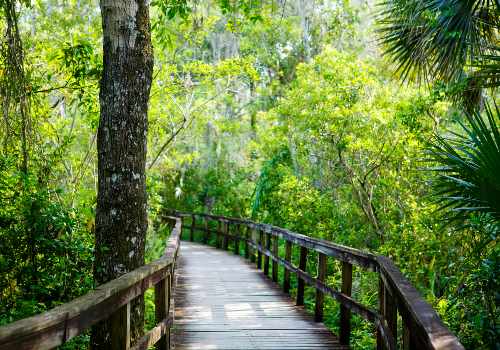
Length: 1,300 miles
State: FL
The Florida National Scenic Trail is an enjoyable long path that ranges across Florida from the Gulf Islands National Seashore in the panhandle to the Big Cypress National Preserve in the Everglades at the southern end of the state.
Luckily, most of the trail is flat, with slight changes in elevation, so hiking this trail isn’t as challenging as others, and close to 400,000 guests take a portion or all of the path each year.
Expect to see marshlands, oak and tropical hammocks, Florida scrubland, saw palmettos, and pine forests as you move through both public land-managed wildlife areas and public lands that permit passage. The trail also offers stops in Gateway Communities to refresh and learn about local history.
Natchez Trace National Scenic Trail
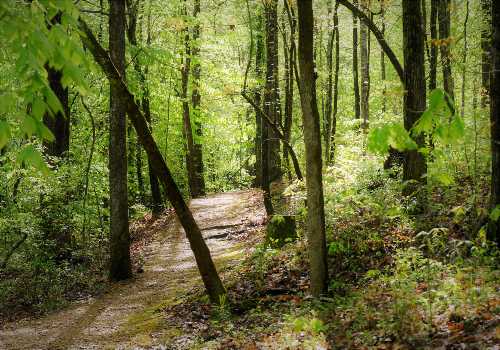
Length: 65 miles
State: MS
The Natchez Trace National Scenic Trail combines five separate hiking or horseback trail sections that run parallel to portions of the scenic Natchez Trace Parkway motor route.
The hiking trail isn’t rigorous, and it allows guests to experience hardwood forests, swamps, wetlands, and all the creatures that live within. With much of the trail length following the original Old Natchez Trace, you’ll get a glimpse into what our ancestors saw as they passed through.
With natural features such as waterfalls and rivers to enjoy and historical landmarks such as the Meriwether Lewis Death & Burial Site, you’ll find this scenic trail beautiful and informative.
New England National Scenic Trail
Length: 215 miles
States: CT, MA
The New England Scenic Trail covers Long Island Sound through the mountain summits in Connecticut and Massachusetts. The trail immerses you in the unique New England landscape, from serene farmlands, forests, streams, steep river valleys, and traprock ridges with waterfalls and delightful views.
Travel through 41 historic villages as you follow the trail and take in cultural and natural experiences. This trail is a popular choice for thru-hikers as most people finish it in 2-4 weeks. While the route is rugged in some areas, the overall path isn’t extremely difficult.
The New England Trail – Trail Review (Video)
North Country National Scenic Trail
Length: 4,600 miles
States: MI, MN, ND, NY, OH, PA, VT, WI
The North Country trail covers eight states and travels through the hills and valleys carved from the glaciers. You will experience many lakes and streams with cold, clear waters, prairies, forests, grasslands, native wildlife, and glimpses into the history of America’s settlement and growth as a nation.
The Western Terminus is in Lake Sakakawea State Park in North Dakota, and the Eastern Terminus is in upstate Vermont. As the longest of the scenic trails, you’ll cover the northern part of the US, and you’ll find numerous entry points along the way for a wonderful day or weekend hikes.
Pacific Crest National Scenic Trail
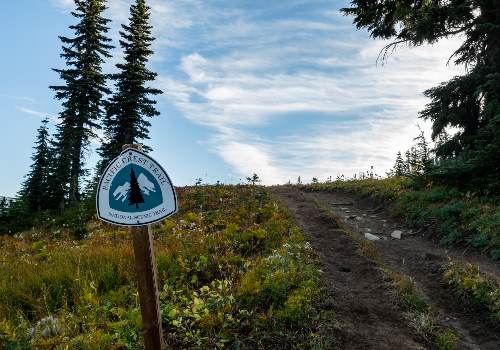
Length: 2,650 miles
States: CA, OR, WA
The Pacific Crest National Scenic Trail (PCT) offers the most incredible terrain and views of any national trail. Stretching between the Mexican border in southern California to the Canadian border up north, you’re sure to have a memorable experience no matter which part of the trail you cover.
The Clymb website highlights some top PCT features you’ll experience as you travel across the mountainous regions of the states through rustic settings that avoid civilization.
Pacific Northwest National Scenic Trail

Length: 1,200 miles
States: ID, MT, WA
The Pacific Northwest Trail travels between the Continental Divide at Glacier National Park and the Pacific Ocean near Cape Alava. The trail takes you through five distinct geographical areas, from highlands to mountains to water, so you’re sure to get an excellent overview of America’s vast resources and natural wonders.
As one of the youngest and least-known National Trails, the Pacific Northwest route hugs the Canadian border and takes you through remote regions rarely seen by travelers.
Potomac Heritage National Scenic Trail
Length: 710 Miles
States: DC, MD, PA, VA
The Potomac Heritage Trail takes you through the Potomac River region and the upper Ohio River and Rappahannock River watersheds for an unforgettable outdoor experience. You can hike, paddle, or bike your way along this trail to gain a different perspective on every visit.
The southern end of the Potomac Heritage Trail can be found at Theodore Roosevelt Island in Washington, DC, and heads north, ending near Johnstown, Pennsylvania. The trail and surrounding region are rich with the beginnings of our American history and culture, giving guests more than just spectacular views to take in.
The Potomac Heritage Trail in 2 Minutes (Video)
Ice Age National Scenic Trail
Length: 1,000 miles
State: WI
The Ice Age Trail travels through Wisconsin’s rolling valleys and hills, around lakes and rivers, all carved from a huge glacier 15,000 years ago. The land of mammoths and cave lions is now the home of amazing vistas as you trace the edge of this old glacier.
Want to Connect With a Community of Over 1,078 RV Enthusiasts?
You can learn more about this time in history by stopping into the museums or historical societies of the many towns the trail takes you through or taking in the natural landscape and wildlife of the more remote sections of the route.
The trail spans from Interstate State Park in St. Croix Falls in Polk County to Potawatomi State Park in Sturgeon Bay, Door County, and welcomes over 2.3 million hikers, backpackers, and snowshoers each year.
The trail is not continuous, but efforts are underway to make connecting the various routes easier to navigate.
The Ice Age National Scenic Trail (Video)
What to Pack for a National Scenic Trail Hike
Many people choose to enjoy day hikes of portions of the National Scenic Trails. Still, even shorter walks can lead to dangerous situations from dehydration, slips, falls, or animal or insect bites.
It’s always a good move to bring the following essential supplies for any scenic trail hike:
1. A Quality Hiking Pack
Invest in a good hiking backpack if you plan to enjoy the US National Trails System. Not only will the pack fabric and construction be more rugged and withstand years of use, but it will have extra padding and straps for a comfortable fit and more pockets to keep all your gear organized.
2. The Correct Footwear
Taking the scenic trails means you’ll be covering all types of terrain, from easy, flat, cleared paths to rocky climbs. Proper hiking shoes that you break in at home before a long hike will do wonders for your safety and comfort on the trails.
The last thing you want to ruin your experience is blisters or twisted ankles because you tried to walk miles in sandals or regular sneakers.
A hiking boot that supports the ankle can help prevent the foot from rolling on uneven ground for more rigorous trails. Look for hiking shoes or boots that are durable, lightweight, and waterproof and give you the foot and ankle support you need for long walks.
3. Water and Snacks
Every member of your hiking party will need to carry enough water to last the day, along with extra if you can handle the weight. However, don’t expect to find potable water sources along the trails, and dehydration can occur quickly during vigorous hikes, especially in warm and hot regions.
Do consider packing a small bottle of water purification pills if you need to rely on lake or stream water to stay hydrated.
The best snacks for day hikes are protein bars, beef jerky, dried fruit, granola, and fresh veggies. These items are relatively light but pack a good amount of nutrition and calories to keep you going. Always pack extra in case of emergency.
Always have a paper map of your trail and a compass in your pack if you get lost. You never know if your mobile phone will have service or the battery will die, so relying solely on your phone’s GPS maps can lead to trouble.
Before you head out:
Always notify someone of your plans and when you expect to return.
Study your trail map.
Verify with local park staff that all parts of your desired route are open and passable.
5. First Aid Kit
- Unparalleled Capacity: Our first aid backpack boasts a large storage capacity, ensuring you have ample space to organize and carry…
- Built to Last: Crafted with strength and durability in mind, our backpack is designed to withstand the toughest conditions. Made…
- Resilient and Scratch-Resistant: Engineered with a scratch-resistant exterior, our backpack maintains its pristine appearance even…
- Weatherproof Warrior: Equipped with a water-resistant coating, our backpack keeps your valuable first aid supplies dry and…
- Safety in the Spotlight: Safety is our top priority, which is why our backpack features multiple reflective strips. Enhancing…
Purchase a comprehensive hiker’s first aid kit that will have everything you need and even things you don’t think of, in case you run into issues on your hike.
If you or those in your hiking party take prescription medication, have extra in your kit. If you don’t have the budget for a complete kit, carry a bag with band-aids, medical tape, gauze, ibuprofen, antibacterial ointment, elastic bandage wraps, antiseptic wipes, plastic gloves, antihistamines, tweezers, small scissors, and safety pins.
6. A Jacket and Weather Protection
No matter how nice the weather is on the day of your hikes, always carry a waterproof jacket and heat-retaining emergency blanket in your pack. Desert climate temperatures can plummet in the evenings, and rain or snow may happen unexpectedly just about anywhere.
7. Flashlight and Matches
Never start any hike without ensuring you have a flashlight or headlamp, extra batteries, matches, or a firestarter in your pack.
You never know when extra light is necessary to find your way back to your car or campsite as the day ends or if you’ll need to make a fire to stay warm or cook a meal. You may also need your flashlight to explore caves or other interesting land formations you discover during your hike.
8. Camping or Pocket Knife
A quality camp knife can be a lifesaver when a hike doesn’t go as planned. You can use it to cut bandages, cordage, or branches in emergencies or use it when making meals.
9. Sun Protection
- 3-fluid ounce travel-sized tube of Aveeno Protect + Hydrate Sunscreen Broad…
- Made with nourishing prebiotic oat, this lightweight daily sunscreen helps leave…
- With a refreshing and weightless formula and a non-greasy feel, the invisible…
- This hypoallergenic sunscreen is paraben-free, phthalate-free, oil-free,…
- From a dermatologist-recommended brand for over 65 years, Aveeno Protect +…
The sun can be brutal in all climates and temperatures, so a good 30 or 50 SPF sun cream is essential to prevent burns. Toss in some lip balm with SPF to ensure your face is totally protected.
The addition of a cap or wide-brimmed hat and sunglasses will complete your outfit, so make sure they are in your pack before heading out.
10. Ripcord
A bundle of thin but strong cordage, even 25-50 feet long, is critical for many situations. For example, you can use a rope to create a makeshift tent by draping your thermal blanket over the top when you string it between trees or hanging your pack off the ground away from hungry wildlife during hiking rest stops.
Final Thoughts
The US National Trails System offers incredible scenic trails across the country for everyone to enjoy.
I hope you use this guide to plan your next outdoor adventure and see and explore our amazing landscapes up close by hiking the US Scenic National Trails!
"Man cannot discover new oceans unless he has the courage to lose sight of the shore."
-- Andre Gide

